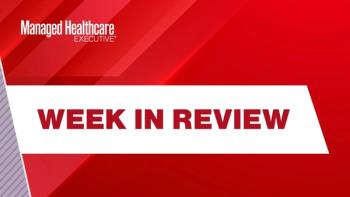
Payer/provider collaboration is a key to improving care
Alignment between health plans and physician groups not only serves the patient well but can result in financial benefits and increased market share through improvement in clinical outcomes and enhanced consumer trust.
ChanIn order to enrich the patient experience, improve health outcomes and reduce the cost of care, healthcare organizations are increasingly looking for creative ways to work together as never before. In particular, alignment between health plans and physician groups not only serves the patient well but can result in financial benefits and increased market share through improvement in clinical outcomes and enhanced consumer trust.
More and more the industry is becoming acutely aware of the benefits that health plan/physician collaboration can bring. This is particularly true for Medicare Advantage (MA) plans and their provider networks, which are entrusted with caring for the nation’s most vulnerable citizens, many of whom live with multiple chronic conditions and may be confronting end-of-life care decisions.
With the appreciation of the need for health plan/physician collaboration growing, it is not an overstatement to say that 2015 has the potential to be the year when such integration becomes the new norm. Here are three reasons why:
- Today roughly 31% of all Medicare beneficiaries are enrolled in MA plans. These plans are graded on a one-to-five-star rating based on 40 or more quality metrics, which weigh such factors as clinical outcomes, access to preventive services like screenings and vaccines, managing chronic conditions, preventive care, and consumer satisfaction. The Centers for Medicare and Medicaid Services (CMS) has begun paying plans based on the quality of care provided to their members – the higher the star rating, the more dollars plans receive from the government. Similarly, Medicare is altering its payment method to doctors and hospitals away from fee-for-service and toward a value-based model that rewards better outcomes. This alignment of financial incentives between physicians, hospitals and health plans makes collaboration paramount to everyone’s success and has all parties pulling in the same direction on the same end of the rope.
- When it comes to healthcare, data is king; and the key to making data actionable is the ability to share it across the continuum in a safe, timely and secure manner. While technology makes this sharing possible, the industry has for too long been stymied by debates over who owns the data, where the data resides, and who should have access. Today, however, there is a new understanding that these questions divert attention from the real issue: How can the data do the most good? Providers and health plans both need to know the health status of their patients/members so they can determine what conditions should be treated and where there are gaps in care … and then be properly reimbursed for the services they provide. Through the use of advanced data-pursuit algorithms which target and obtain missing data, health plans and providers have access to this information and by jointly leveraging such technology have the ability to break new ground and raise the bar in care delivery.
- Thanks to new medical advances, Americans are living longer than ever before. As people living into their 90s and beyond become more typical, the issues of how to better manage seniors with multiple chronic conditions and address end-of-life care require greater attention. Fortunately here, too, we are seeing a vast increase in the willingness of physician groups and health plans to share their best practices for the benefit of all. At our recent health plan-sponsored Best Practices Summit, several of the physician groups with whom we partner freely shared with all the other physician groups in attendance their best practices in these two vital areas. Among the many best practices shared were a multidisciplinary outpatient and home-visiting palliative care program, a program that systematically obtains and documents the advanced-care planning decisions for high-risk patients (in both inpatient and outpatient settings), and a program to identify and address the needs of complex, high-risk seniors. A key aspect of the summit was the expectation that attending physician groups each select and implement a new best practice focusing on an opportunity for improvement. By doing so physicians and health plans have the potential to earn a new level of trust and appreciation while fulfilling their mission in a compassionate and collaborative manner.
In these and other areas, unprecedented creative collaboration between health plans and physicians is taking place. We are seeing the development of affordable programs and products that meet the needs of Medicare beneficiaries, including those that are healthy and active as well as those living with multiple chronic conditions and becoming increasingly frail. We are seeing research into best practices in geriatric care and then unselfish sharing of that information across the industry. And we are seeing an improvement in administrative efficiencies between health plans and provider partners with a particular focus on data exchange that can support better systems of care and service.
Payer/provider collaboration is the key to improving patient care. It is incumbent upon the healthcare industry to find new ways for such collaboration to happen and, by doing so, help make sure that the system works better for everyone.
Raymond Chan, M.D., is corporate medical director at SCAN Health Plan, one of the nation’s largest not-for-profit Medicare Advantage plans.
Newsletter
Get the latest industry news, event updates, and more from Managed healthcare Executive.

















































